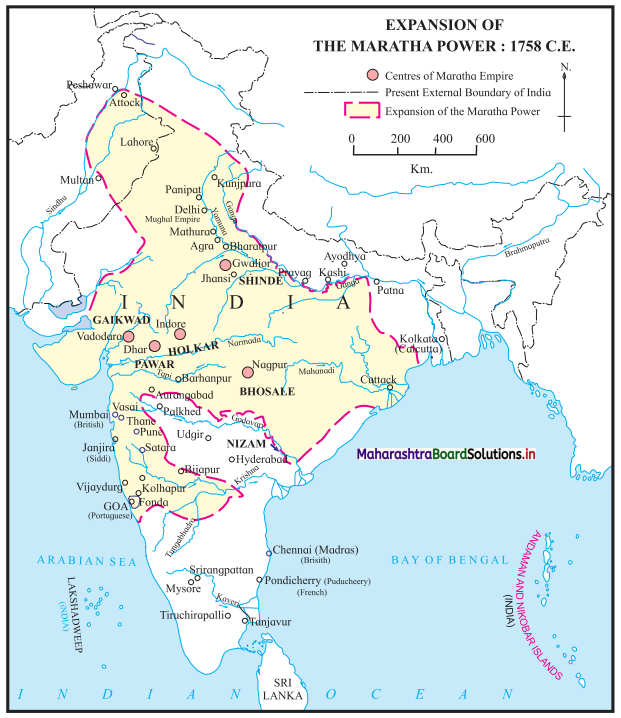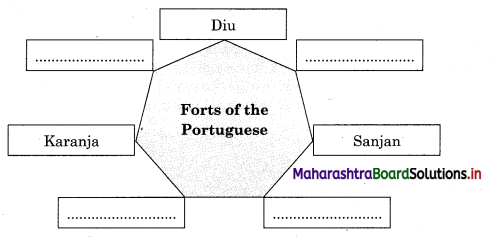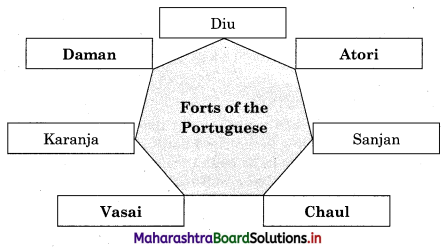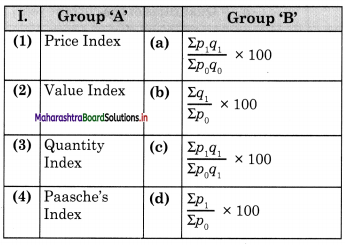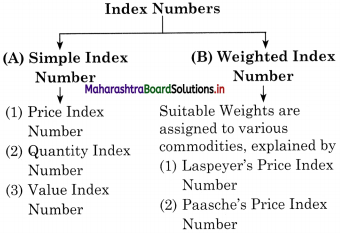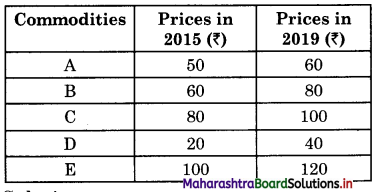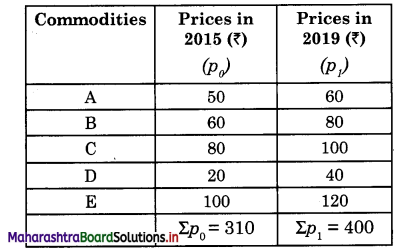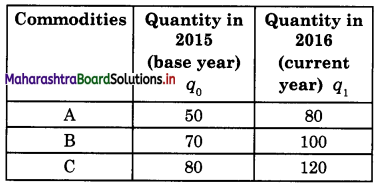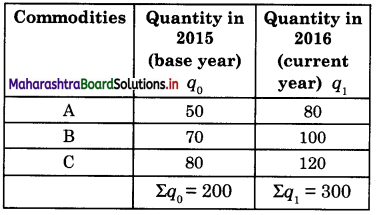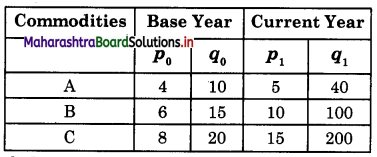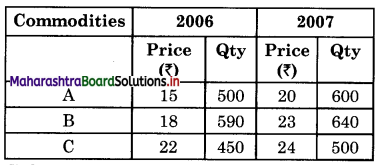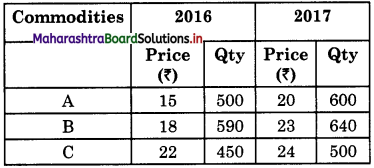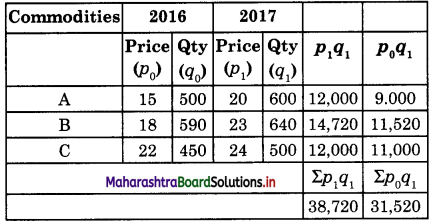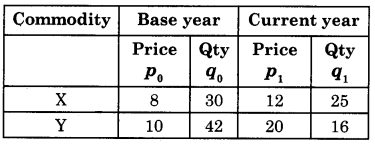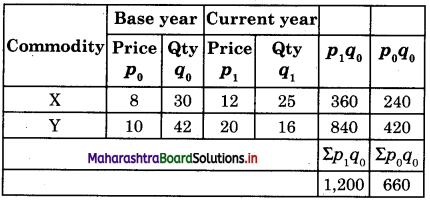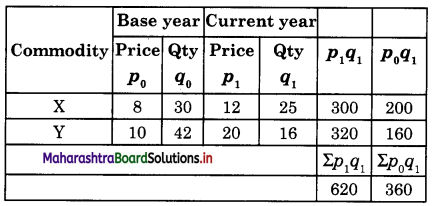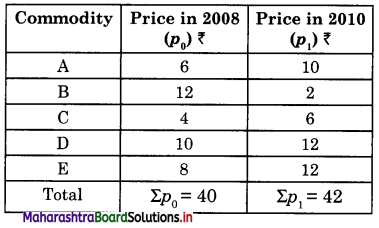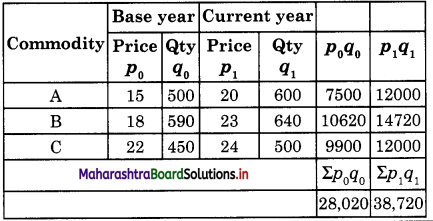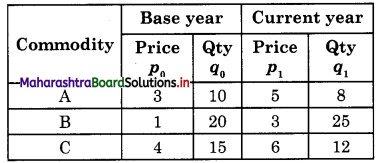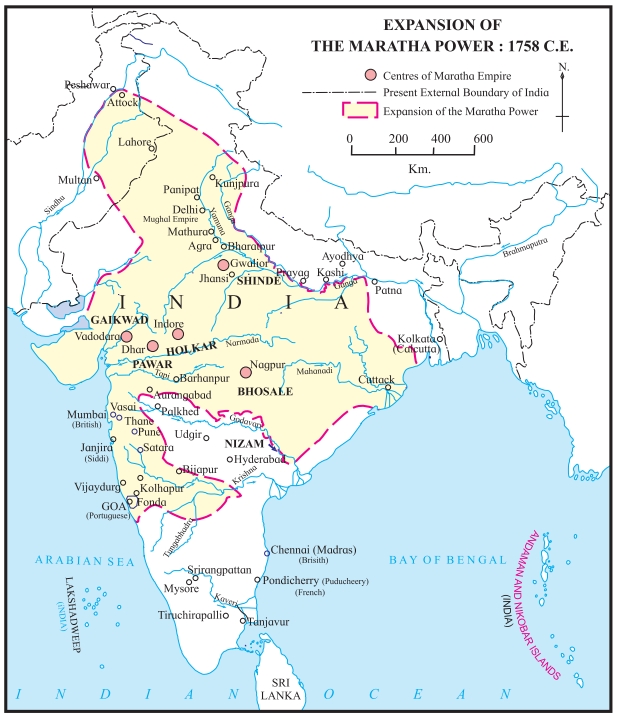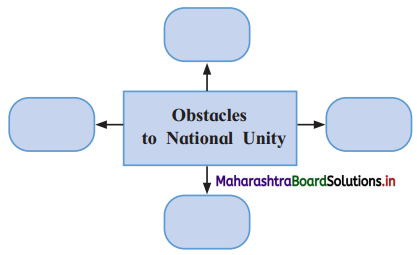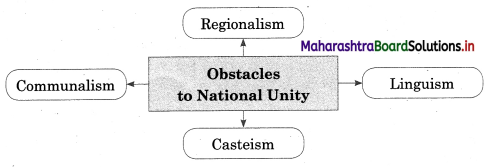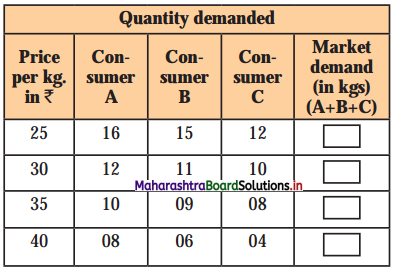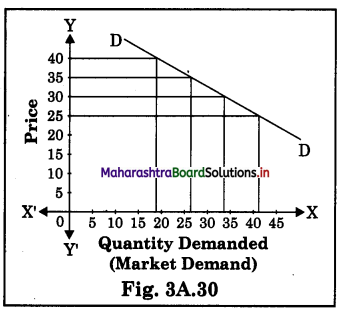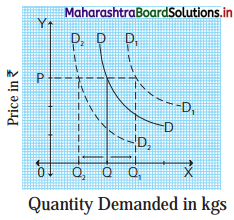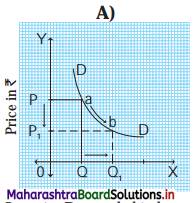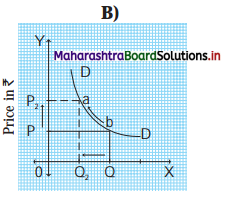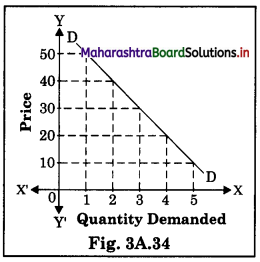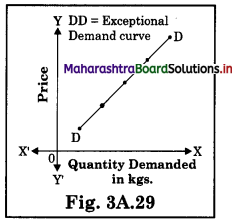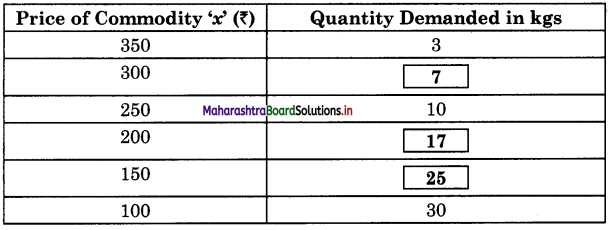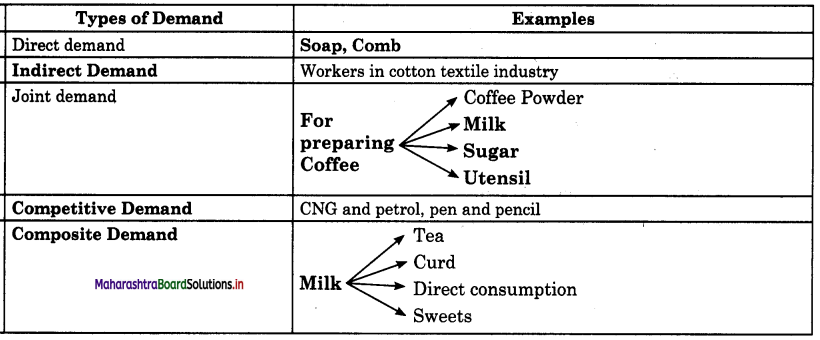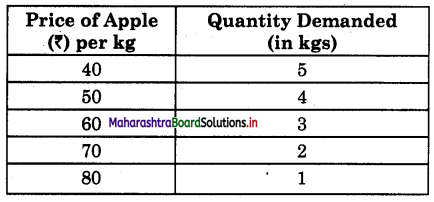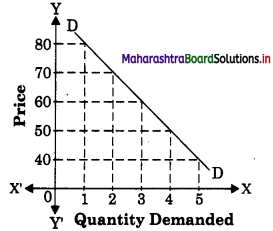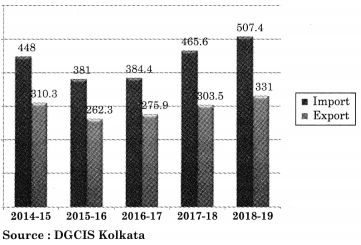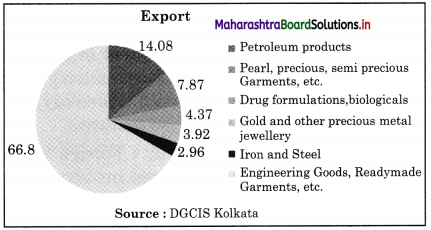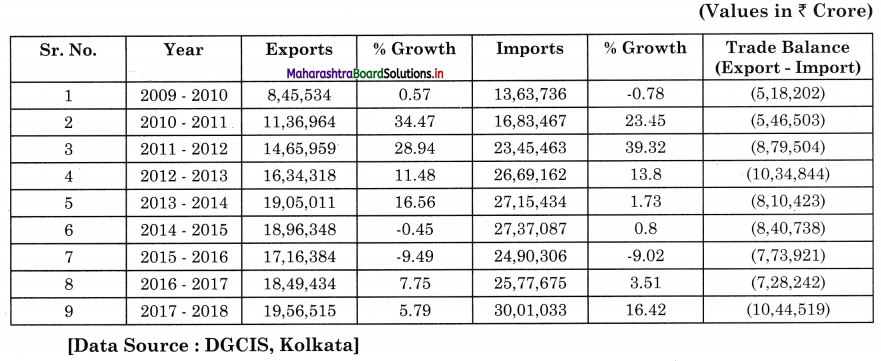Balbharti Maharashtra State Board Class 12 Sociology Important Questions Chapter 3 Diversity and Unity in Indian Society Important Questions and Answers.
Maharashtra State Board 12th Sociology Important Questions Chapter 3 Diversity and Unity in Indian Society
1A. Complete the following statements by choosing the correct alternative given in the brackets and rewrite it.
Question 1.
India is a ___________ country. (homogenous, secular, non-religious)
Answer:
secular
Question 2.
Dr. B.S. Guha classifies the population of India into ___________ main racial groups. (four, five, six)
Answer:
six
Question 3.
___________ tends to bring together people of the faith to celebrate commonly cherished festivals and
events. (Race, Religion, Caste)
Answer:
Religion
![]()
Question 4.
In ___________ Indian States were organized on a linguistic basis. (1947, 1971, 1956)
Answer:
1956
Question 5.
The Constitution of India has approved ___________ Official languages. (20, 27, 22)
Answer:
22
Question 6.
21st February 2017 was declared as an International ___________ Language Day by the United Nation. (Mother, Father, Spiritual)
Answer:
Mother
Question 7.
___________ refers to territorial entities found within the country. (Religion, Language, Region)
Answer:
Region
Question 8.
Sharing of natural resources gives the people a sense of ___________ unity. (religious, cultural, geographical)
Answer:
geographical
Question 9.
___________ examines the role of religion in social integration as a binding force among individuals and groups. (M. N. Srinivas, Iravati Karve, G. S. Ghurye)
Answer:
M. N. Srinivas
Question 10.
___________ refers mainly to loyalty to one’s own religion before the nation. (Casteism, Communalism, Regionalism)
Answer:
Communalism
Question 11.
Indian States have been divided on a ___________ basis. (religious, caste, linguistic)
Answer:
linguistic
![]()
Question 12.
___________ is built into the fabric of society and passed down from one generation to the next. (Equality, Inequality, democracy)
Answer:
inequality
Question 13.
The spirit of tolerance promotes ___________ (economic growth, national integration, diversity)
Answer:
national integration
Question 14.
Economic disparity means ___________ distribution of wealth. (normal, uneven, even)
Answer:
uneven
Question 15.
India is federal Union comprising of ___________ states with seven union territories. (29, 30, 28)
Answer:
29
Question 16.
Language plays an important role of ___________ in an organisation. (interest, communication, transport)
Answer:
communication
Question 17.
Caste an example of ___________ (equality, inequality, none)
Answer:
inequality
Question 18.
___________ refers to loyalty to one’s own religion before nation. (Casteism, Communalism, Linguism)
Answer:
Communalism
Question 19.
Unity implies a sense of oneness meaning ___________ (uniformity, integration, identity)
Answer:
integration
Question 20.
After independence India has adopted ___________ system. (presidential, federal, dictatorship)
Answer:
federal
Question 21.
In the constitution of India there are ___________ fundamental rights. (six, seven, eight)
Answer:
six
Question 22.
State were formed on the linguistic basis in the year ___________ (1956, 1951, 1947)
Answer:
1956
![]()
Question 23.
___________ is a multi-religious Country. (India, Bangladesh, China)
Answer:
India
Question 24.
India has always ___________ different cultures. (assimilated, diversified, obstructed)
Answer:
assimilated
Question 25.
Thrissurpuram is the festival held which state ___________ (Tamil Nadu, Kerala, Karnataka)
Answer:
Kerala
Question 26.
A large section of the tribal population of India live in ___________ State. (North eastern, southern, western)
Answer:
Noth eastern
Question 27.
Gender expression is linked to gender ___________ (culture, biology, socialisation)
Answer:
socialisation
Question 28.
___________ implies respect and tolerance for people of all faiths. (communalism, secularism, casteism)
Answer:
secularism
Question 29.
The Constitution of India, allows affirmative action through ___________ in education and employment. (discrimination, reservation, tolerance)
Answer:
reservation
B. Correct the incorrect pair and rewrite it.
Question 1.
(a) Kerala – Onam
(b) Tamil Nadu – Pongal
(c) Punjab – Baisakhi
(d) Assam – Makar Sankranti
Answer:
(d) Assam – Bihu
Question 2.
(a) North – Badrainarayan
(b) South – Rameshwaram
(c) East – Golden Temple
(d) West – Dwarka
Answer:
(c) East – Puri
![]()
Question 3.
(a) Hindus – Diwali
(b) Muslims – Muharram
(c) Christians – Christmas
(d) Parsi – Easter
Answer:
(d) Parsi – Pateti
Question 4.
(a) Secularism – Sarvadharmasamabhav
(b) Linguism – Language patriotism
(c) Communalism – Religious patriotism
(d) Religionism – Excessive attachment of one’s own caste
Answer:
(d) Religionism – Excessive attachment of one’s own state
Question 5.
(a) Kaveri water dispute – Linguism
(b) Babari – Masjid demolition – Communalism
(c) Unequal distribution of wealth – Economic inequalities
(d) Caste-based vote banks – Casteism
Answer:
(a) Kaveri water dispute – Regionalism
Question 6.
(a) Sanskrit, Kashmiri, Hindi, Bengali – Indo-Aryan
(b) Telugu, Kurukh, Oraon, Maler – Dravidian
(c) Himalayan and Bhutia Languages – Austro-Asiatic
(d) Aka – Jeru, Ongan and Sentinelese – Andamanese
Answer:
(c) Himalayan and Bhutia Languages – Sino-Tibetan
Question 7.
(a) The Three Language Formula – Religious unity
(b) The rule of law – Political unity
(c) Celebration of festivals – Cultural unity
(d) Sharing of natural resources – Geographical unity
Answer:
(a) The Three Language Formula – Linguistic unity
![]()
Question 8.
(a) ‘Below Poverty Line’ – Private property
(b) Private school differences – Educational differences
(c) The mall culture – Social environment
(d) Capacities and capabilities – Individual differences
Answer:
(a) ‘Below Poverty Line’ – Family influence
1C. Identify the appropriate term from the given options in the box and rewrite it against the given statement.
Unity, Language, Race, Regionalism, Class, Gender fluidity, North East, Jajmani, Sexuality, Culture, Egalitarian society, Secularism, Kannada, Northeast, Ethnocentrism, Totalitarianism.
Question 1.
The state of togetherness and oneness.
Answer:
Unity
Question 2.
A classical language of India.
Answer:
Kannada
Question 3.
A group of people with set distinctive physical features.
Answer:
Race
Question 4.
The region comprises seven sisters.
Answer:
East North
Question 5.
Relating to another person physically, emotionally and/or sexually.
Answer:
Sexuality
Question 6.
Those who do not limit themselves within the binary.
Answer:
Gender fluidity
Question 7.
The exchange of goods and services between various jatis.
Answer:
Jajmani
![]()
Question 8.
People belonging to different religious feel that their religion is superior.
Answer:
Ethnocentrism
Question 9.
Respect and tolerance for people of all faith.
Answer:
Secularism
Question 10.
Loyalty to one’s own state or region before one’s nation.
Answer:
Regionalism
Question 11.
It is based on the principle of cultural integration.
Answer:
National Anthem
Question 12.
It is caused by Religious fundamentalism.
Answer:
Terrorism
Question 13.
Malnutrition deaths of infants.
Answer:
Below Poverty Line
1D. Correct underlined words and complete the statement.
Question 1.
In Kolkata, the festival of lights (Diwali) is celebrated along with the Parsis Festival of Lights (Hannukah).
Answer:
In Kolkata, the festival of lights (Diwali) is celebrated along with the Jewish Festival of Lights (Hannukah).
Question 2.
700 jatis are classified under the Scheduled Caste communities.
Answer:
750 jatis are classified under the Scheduled Caste communities.
![]()
Question 3.
Religion has become a means for competing for access to resources and power in modern India.
Answer:
Caste has become a means for competing for access to resources and power in modern India.
Question 4.
Communalism leads to Inter-State rivalries.
Answer:
Regionalism leads to Inter-State rivalries.
Question 5.
In all societies, we see economic equality.
Answer:
In all societies, we see economic inequality.
Question 6.
When people are identified on the basis of wealth, education and job is caste.
Answer:
When people are identified on the basis of wealth, education and job is class.
Question 7.
In traditional Indian society, importance was given to achieved status.
Answer:
In traditional Indian society, importance was given to ascribed status.
Question 8.
Due to racial discrimination, women are denied many rights privileges and opportunities that they deserve.
Answer:
Due to gender discrimination, women are denied many rights privileges, and opportunities that they deserve.
Question 9.
Class diversity is observed in various fields like costumes tradition, food, habits, norms, values, festivals, and lifestyle.
Answer:
Cultural diversity is observed in various fields like costumes tradition, food, habits, norms, values, festivals, and lifestyle.
![]()
Question 10.
Indians have faith in dictatorships.
Answer:
Indians have faith in democracy.
Question 11.
Regional fundamentalism can lead to acts of terrorism.
Answer:
Religious fundamentalism can lead to acts of terrorism.
Question 12.
Disputes created among the racists are the distribution of river water, constructions, dams, demand separate states, etc.
Answer:
Disputes created among the regions/states are the distribution of river water, constructions, dams, demand for separate state etc.
Question 13.
Many regions of south India disapprove of the acceptance of English as an official language.
Answer:
Many regions of south India disapprove of the acceptance of Hindi as an official language.
Question 14.
Religion participation is required to conserve language diversity.
Answer:
Community participation is required to conserve language diversity.
Question 15.
The role and significance of Chhatrapati Shivaji Maharaj are well-established in Gujarat.
Answer:
The role and significance of Chhatrapati Shivaji Maharaj are well-established in Maharashtra.
2. Write short notes.
Question 1.
Secularism
Answer:
Given the nature of our religious plurality, the concept of secularism in India fosters a modern outlook showing religious tolerance. In India, secularism implies respect and tolerance for people of all faiths, beautifully encapsulated in the term, ‘Sarva dharma samabhav’.
India has been and continues to be a land with multiple faith systems. This necessarily includes acceptance of people who do not subscribe to any religious identity, custom or practice, but who may express their loyalty and commitment to secular values such as scientific endeavor, humanitarianism, humanism, and so forth.
![]()
The term secularism implies respect and tolerance for people of all faith. The concept of secularism dates back to 2300 years ago by emperor Ashoka the term ‘Sarva Dharma Samabhav’ is one of the most cherished Indian values it is one of the biggest achievements of a democratic country. Secularism is a simple word that refers to an ideology that provides people with the right to follow any religion. It means separate religion from political, economic, social, and cultural aspects of life.
The constitution of India gives the right of freedom to all religions, protects the belief patterns and values of their religion. It permits the state with the responsibility to maintain neutrality in matters of religion. Secularism states that no one shall be subject to discrimination by any state or any social institution on grounds of religion or belief patterns.
Living in a secular state brings faith and acceptance of people from different religious backgrounds. In this way, secularism fosters a modern outlook showing religious tolerance, humanity and promotes the integration of all people in society.
Question 2.
Linguistic Unity
Answer:
Linguistic Unity means that every language in the country whether regional or national language must be treated equally. The Indian State recognizes linguistic diversities and makes special provisions to protect and support some of the languages and dialects that are on the verge of extinction.
People speaking different languages have been living harmoniously without any conflicts. The three-language formula followed by all State Education Boards enables the inculcation of Hindi and English as languages to connect with the Union, English to connect with the outside world, and the regional/local language for communication within the State.
As per the policy the three languages recommended were:
- 1st language: Regional Language or Mother Tongue.
- 2nd language: English or Modern Indian Language (in Hindi speaking States) Hindi or English (in non-Hindi speaking States)
- 3rd language: English or Modern Indian Language (in Hindi speaking States)
Classical languages and languages of linguistic minorities have also found a place in the educational curriculum
Many educational bodies offer learners the option of answering their examinations in a range of mediums (e.g. Marathi, Hindi, Urdu, Gujarati, Kannada, English). Doordarshan and Akashwani have programmes in multiple Indian languages that reach out to millions of persons. These are measures that promote a sense of linguistic unity among multi-lingual people of the land.
![]()
Question 3.
Process of Unity in India
Answer:
At the root of all the co-existing diversities, there exists an underlying unity. This has created a composite culture decisively pan-Indian in nature. In India, secularism implies respect and tolerance for people of all faiths. India has been and continues to be a land with multiple faith systems
Following are the unifying factors in India:
Geographical unity: one would find unity in the agrarian cycles such as the sowing season and the harvest season. Sharing of natural resources gives people a sense of oneness. Festivals such as Onam in Kerala, Makar Sankrant in Western and South India, Pongal in Tamil Nadu, Baisakhi in Punjab, and Bihu in Assam revolve around the harvest season.
Religious Unity: Although various religious groups in India present external differences, there are some commonly shared elements. India is a land of diverse religious faiths. Religious unity in India finds its expression through places of worship scattered all over the country.
Political Unity: National unity and integrity have been maintained even though sharp economic and social inequalities have obstructed the emergence of an egalitarian society. The Five-Year Plans and several developmental schemes were geared towards uplifting the poor and weaker sections of society. The Constitution of India has established the “rule of law” throughout the country. All citizens are equal and subject to the same authority.
Linguistic diversity: The Indian State recognizes linguistic diversities and makes special provisions to protect and support some of the languages and dialects that are on the verge of extinction. The three-language formula followed by all State Education Boards enables the inculcation of Hindi and English as languages to connect with the Union, English to connect with the outside world, and the regional/local language for communication within the States.
3. Write differences.
Question 1.
Religious diversity and Caste diversity
Answer:
| Religious diversity | Caste diversity |
| (i) Meaning: Religious diversity means people practicing different religions living together Religions like Hinduism, Jainism, Buddhism, Christianity, Islam, Zoroastrianism, and Sikhism have flourished in India. | (i) Meaning: There is caste diversity in India with four varnas or caste groups Caste diversity means people belonging to different castes living together. |
| (ii) Sub Division: Each major religion is subdivided along the lines of religious doctrines, sects, and cults. | (ii) Sub Division: There are thousands of castes and subcastes in India. |
| (iii) Features: Each religion has its own philosophy, ideology, and rituals. | (iii) Features: Each caste has its own lifestyle, rituals, festivals, and deities. |
| (iv) Impact: This diversity leads to communalism i.e. loyalty to one’s own religion leads. | (iv) Impact: This diversity creates a negative and conservative attitudes and leads to casteism i.e. extreme loyalty to one’s own caste. |
| (v) Result: It creates a feeling of insecurity and gives rise to communal tensions. | (v) Result: It breaks up the solidarity and creates disunity. |
| (vi) Function: Religion tends to bring together people of the faith to celebrate commonly cherished festivals and events. | (vi) Function: The different castes functioned in an interdependent barter relationship which was the basis of the agrarian economy. |
Question 2.
Gender Binary and Gender Diversity
Answer:
| Gender Binary | Gender Diversity |
| (i) Meaning: Gender binary is the classification of gender into two distinct, opposite forms of masculine and feminine, due to the social system. | (i) Meaning: Gender diversity go beyond gender binaries of female-male, masculine and feminine, etc |
| (ii) Socialization: It results in Gender stereotypes determining people’s beliefs about the characteristics of males and females. | (ii) Socialization: It results in gender plurality which seeks to identify all gender identities or expressions in addition to the binary. |
| (iii) Approach: It excludes non-conformists, and supports patriarchal values. | (iii) Approach: It has an inclusive approach and promotes Constitutional gender equality. |
| (iv) Effect: It results in the dominance of heteronormativity in society and in all its institutions. | (iv) Effect: It results in acceptance of gender fluidity. |
4. Explain the following concepts with examples.
Question 1.
Regionalism
Answer:
Regionalism refers to loyalty to one’s own State or region before one’s nation. This interferes with national integration to a great extent. The history of a particular region is glorified and often it is misused to stress divisive forces, thus ignoring the common cultural legacy and heritage.
Regionalism emerges due to the desire of people speaking one language to have one State. There is also a strong urge to give priority to the economic development of one’s own region. This leads to Inter-State rivalries. So long as this Inter-State rivalry is economic and social (e.g. for funds and welfare schemes), it is healthy.
![]()
But when this rivalry takes political overtones, it becomes very dangerous. Political parties give more importance and weightage to local and regional matters and problems rather than the nation. Regionalism thus strengthens sectarian biases by political parties. Inter-regional tensions escalate over economic, political, and such issues. This has led to regional movements for State rights and militant movements for separatism.
Example: The Jammu and Kashmir issue, the Punjab problem, Assam issue, etc. All this, if unchecked, can strike at the very root of democracy.
Question 2.
Linguistic Unity
Answer:
Linguistic unity means that every language in the country, whether regional or national language, must be treated equally. The Indian State recognizes linguistic diversities and also makes special provisions to protect and support some of the languages and dialects that are on the verge of extinction.
Classical languages and languages of linguistic minorities have also found a place in educational curricula. Many educational bodies offer learners the option of answering their examinations in a range of mediums (e.g., Marathi, Hindi, Urdu, Gujarati, Kannada, and English). Doordarshan and Akashwani have programmes in multiple Indian languages that reach out to millions of persons who tune in to them. These are measures that promote a sense of linguistic unity among multi-lingual people of the land.
Example: The three-language formula followed by all State Education Boards enables the inculcation of Hindi and English as languages to connect with the Union, English to connect with the outside world, and the regional/local language for communication within the State.
5A. Complete the concept map.
Question 1.
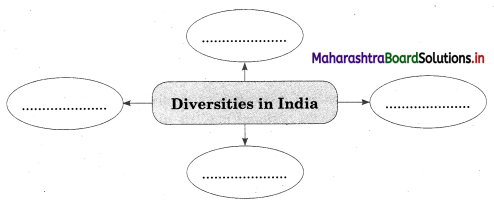
Answer:
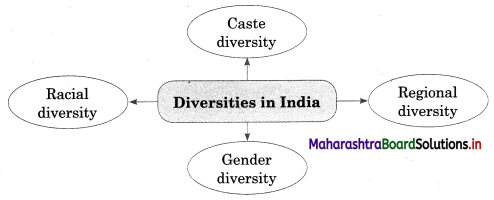
Question 2.

Answer:

![]()
Question 3.

Answer:

Question 4.
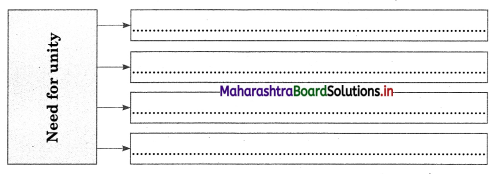
Answer:
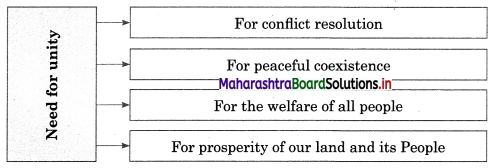
Question 5.

Answer:

Question 6.
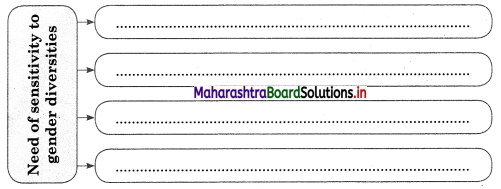
Answer:
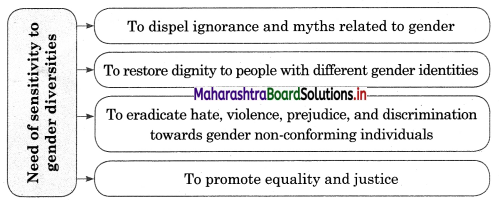
Question 7.

Answer:

5B. State whether the following statements are True or False with reasons.
Question 1.
Discrimination based on caste is a major hurdle for national integration.
Answer:
This statement is True.
Casteism refers to loyalty to one’s own caste before loyalty to the nation. Caste ties are so strong that people are inclined to think in terms of caste before the nation. This may lead to caste members protecting their own caste group through social service, education, medical, and other welfare schemes. Caste members take with them their biases and prejudices into politics. They then begin to express their sectarian interests in various ways. People are influenced by them and vote for their own caste members. Those castes having numerical strength rise up through politics. Those who win the elections then favour their caste groups in various ways. In view of all this, the problem of national integration becomes very serious.
![]()
Despite laws, urbanization, industrialization, and education, the caste system continues in the mindsets of many people. Caste has become a means for competing for access to resources and power in modern India. Discrimination based on caste is a major hurdle for national integration. People engaged in weakening the unity of the country tried desperately to create divisions and rifts in the name of caste, creed, and culture. The feeling of social neglect among scheduled castes due to suppression by upper castes has disturbed the sense of ‘we feeling’ and unity which has resulted in caste atrocities and caste prejudices. Excessive caste-based loyalty is particularly evident at the time of elections, with political parties wooing members of their own caste for the sake of votes.
Question 2.
India is a diversified country
Answer:
This statement is True.
India is a land of variety, there is so much diversity along the lines of regions, language, religion, caste, etc. Here, we see various places of religious worship, a celebration of festivals, values of equality, secularism, humanity, etc., are nourished.
Some of the diversifying factors are:
(i) Religious diversity: Religion is one of the key facts of diversity in Indian society. Although India is a multi-religious and multi-cultural country, the Constitution of India ensures that the secular fabric of society is maintained. The Right to Freedom of Religion is also declared as a Fundamental Right by the Indian Constitution. Religion tends to bring together people of the faith to celebrate commonly cherished festivals and events.
(ii) Linguistic diversity: India is a land of many languages. The Constitution of India has approved 22 official languages. Among these, three languages have been recognized as classical languages viz. Sanskrit, Tamil, and Kannada. The Language Policy of India guarantees protection to linguistic minorities. A unique feature of India is the concept of protecting the interest of children to get basic education in their mother tongues (i.e., home language).
![]()
(iii) Caste diversity: Caste is a major source of diversity in Indian society. That there are about 3500 jatis found in India, out of which 751 are classified under the Scheduled Caste communities. The caste system provided the basis of social structure. The practice of the caste system is not confined to Hindus. Caste-like divisions are seen among Muslims, Christians, and Sikhs as well.
